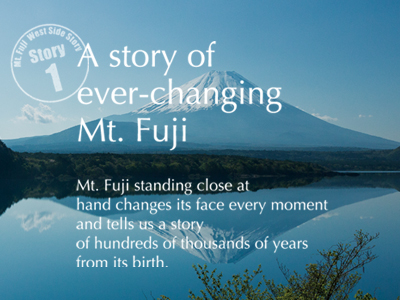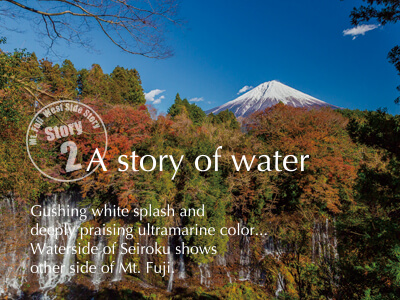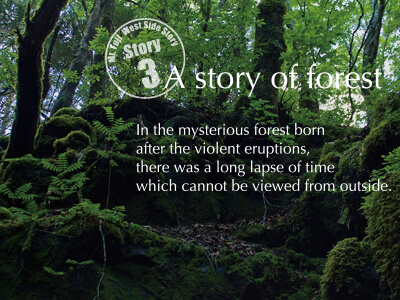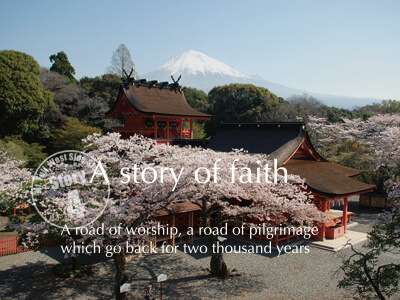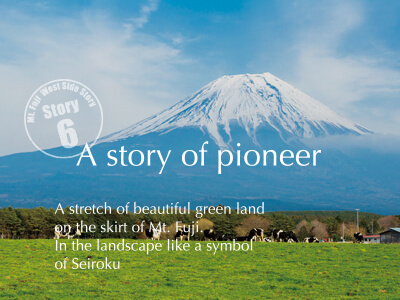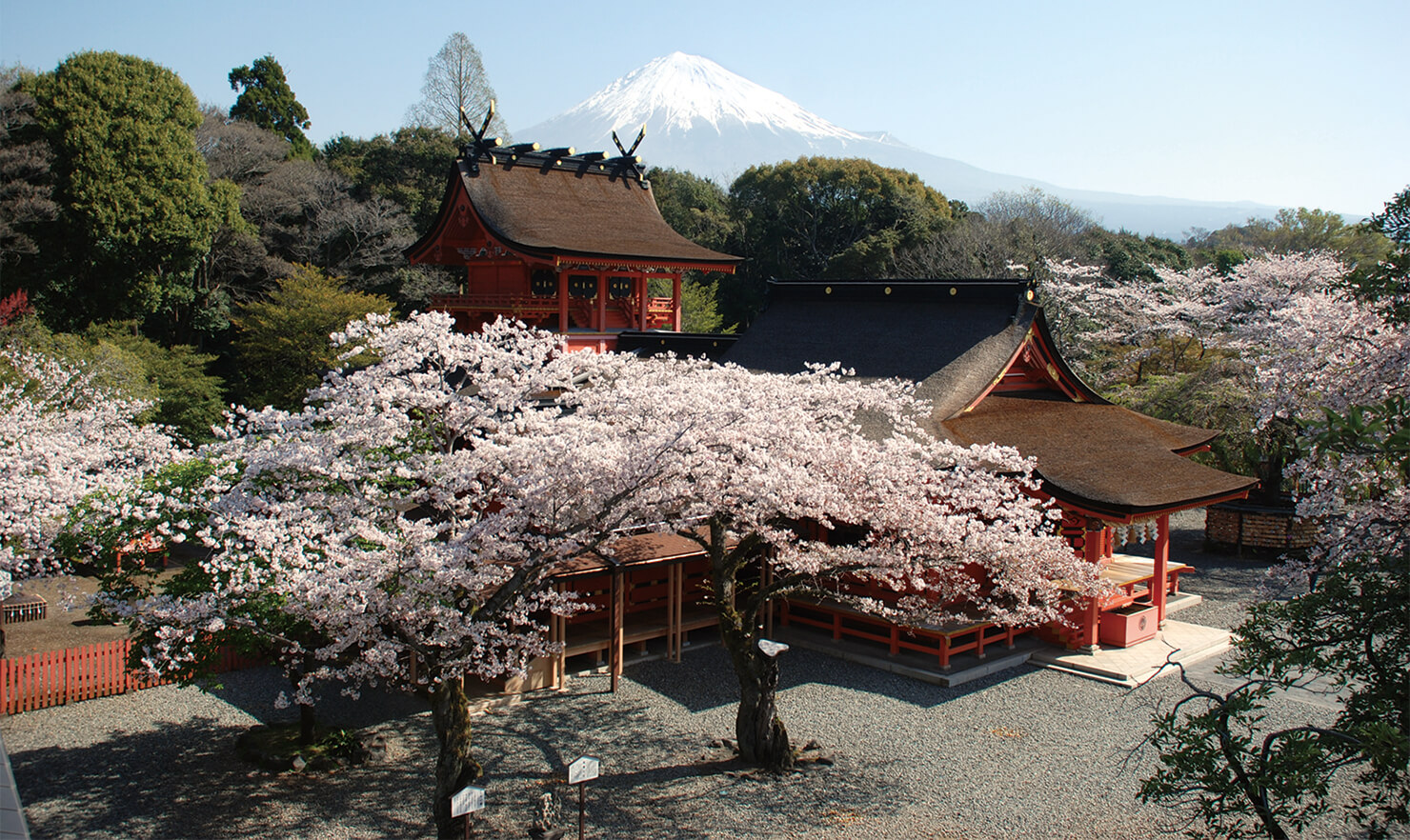
Fujisan Hongu Sengen-taisha ShrineB-6
It is the head shrine of all Sengen-jinja shrines that worship Mt. Fuji in Japan. Its origin of the shrine is that Asama no ookami (Konohanano sakuyahimeno mikoto) was enshrined in order to bring volcanic eruptions under control.
Mt. Fuji has been the sacred mountain for Japanese with awe, respect, and gratitude as the malignant god of fire and the motherly god of water since the ancient times.
Lakes at the foot, well water, lava caves, and climbing path... all of these are the holy spots of Mt. Fuji.
A universe of faith in Mt. Fuji that is magnificent and profound from the top to the extensive skirt has been established while changing the methods of prayer in history. And with Mt. Fuji registered as a World Cultural Heritage site, it seems that the road in Westside having splendid Mt. Fuji close at hand has revived as a road of pilgrimage.
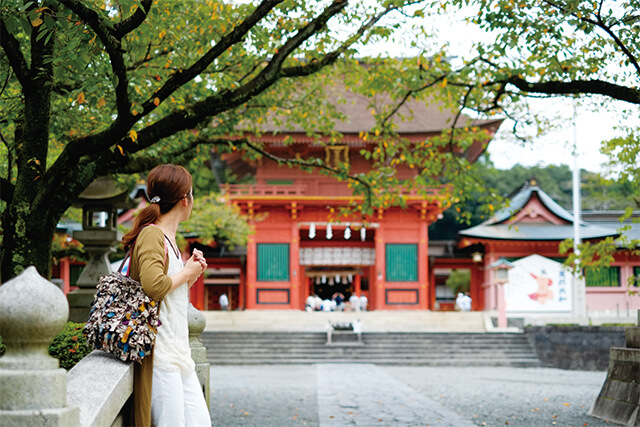
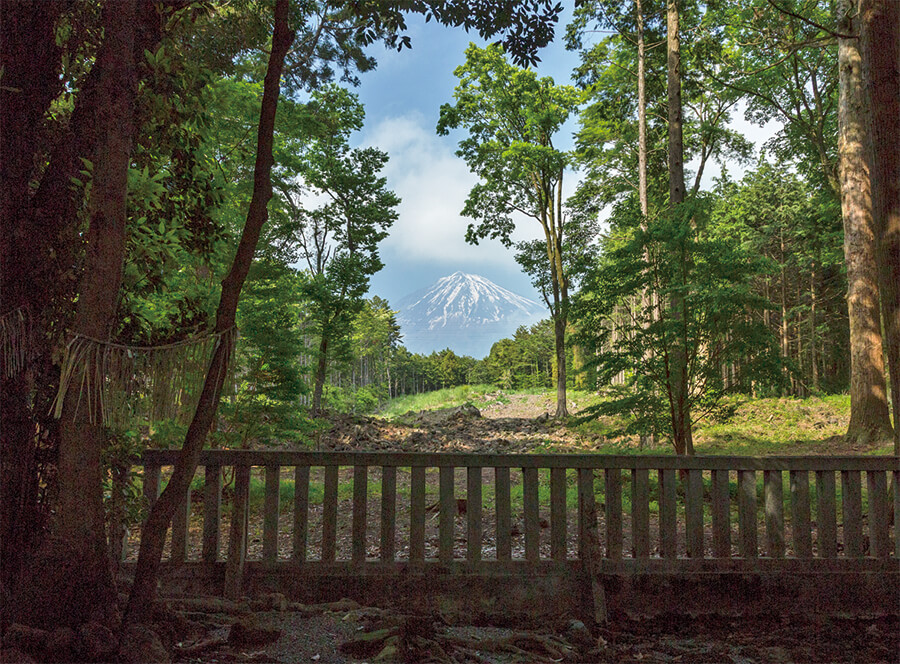
Yamamiya Sengen-jinja ShrineB-6
It has no main hall or worship hall and prays to Mt. Fuji as a sacred object from the distance. It is the oldest Sengen-jinja shrine inheriting the style of traditional Japanese natural belief.
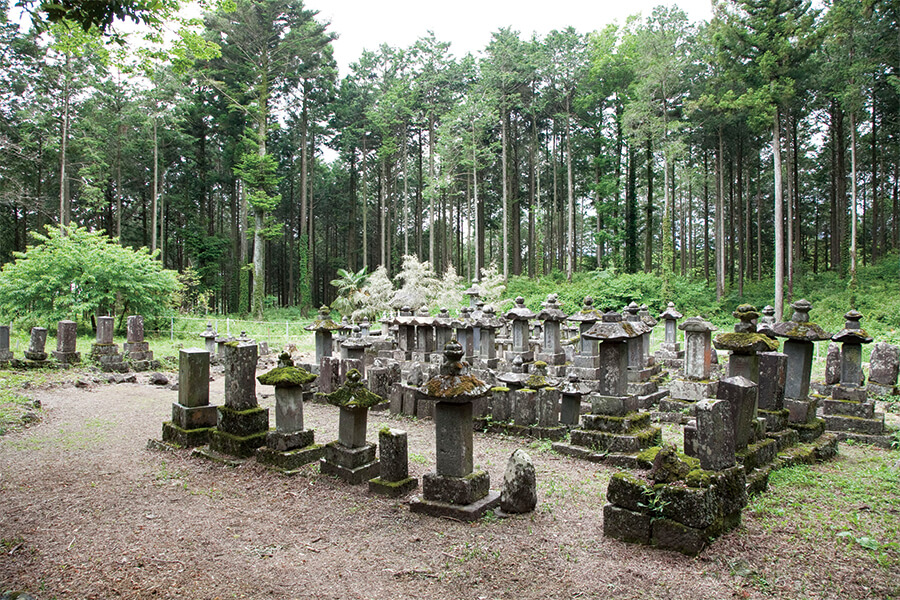
Hitoana Fujiko RuinsB-4
In the precinct of Hitoana Sengen-jinja Shrine, there is a lava cave which “Kakugyo”, the founder of Fujiko, attained enlightenment from the god of Mt. Fuji. Over 200 of monuments and towers speak the prosperity of Fujiko.
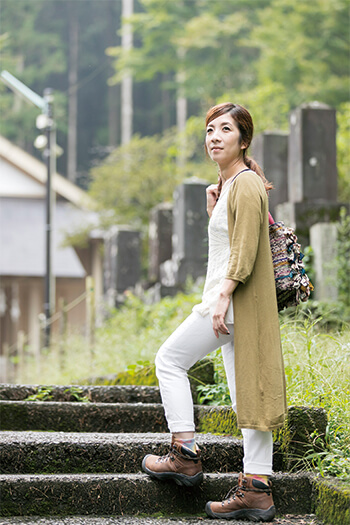
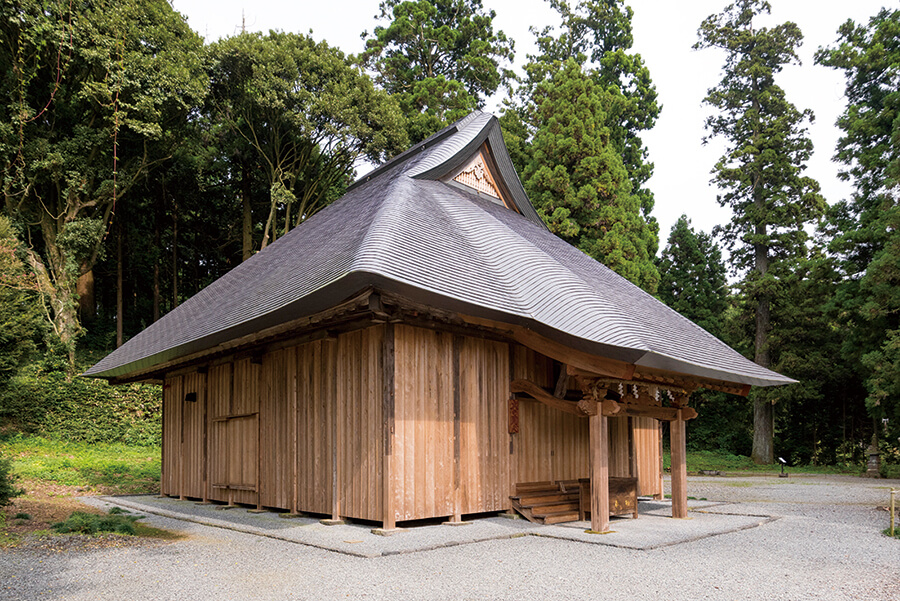
Murayama Sengen-jinja ShrineC-6
The shrine is located at the starting point of the oldest climbing trail, “Murayama Entrance”. Mizugoriba (place for cold-water ablution) and gomadan (an altar for fire ceremony) used by Yamabushi (monk) remain at the site and tell a history of Fujishugen and the syncretization of Shinto with Buddhism.
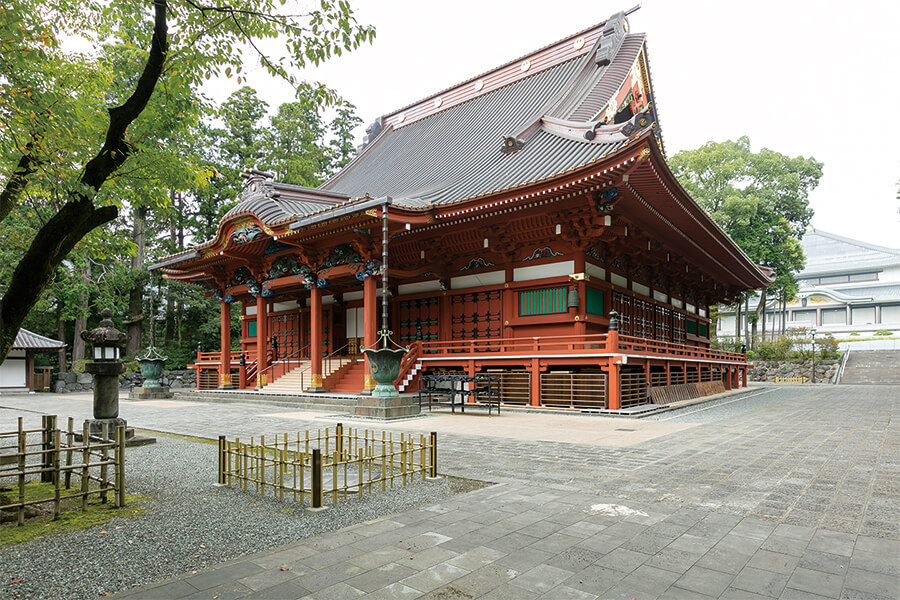
Taiseki-ji TempleA-5
It is the head temple of Nichiren Shoshu and the largest temple in Fuji Gozan. There are beautiful wooden buildings including Five-story Pagoda (National Important Cultural Property), Sammon Gate, and Goei-do Hall on the premises. It is also famous for approximately 5,000 cherry trees.



